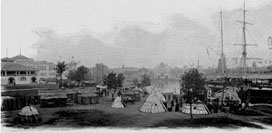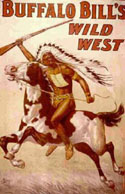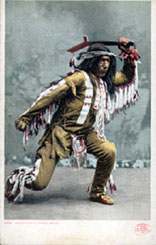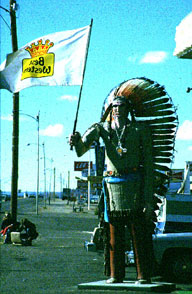|

American Indians at Chicago's Columbian Exposition |
And why does the University of Illinois Athletic Department have a decidedly inauthentic representation of an Illinois Indian as its mascot?
Taken
altogether, it is clear that many of these portrayals are shaped
less by “real” Native people than by what non-Indians
expect American Indians to be.
|
| |
Department
of Anthropology |
copyright © 2002
University of Illinois, All rights reserved. |






